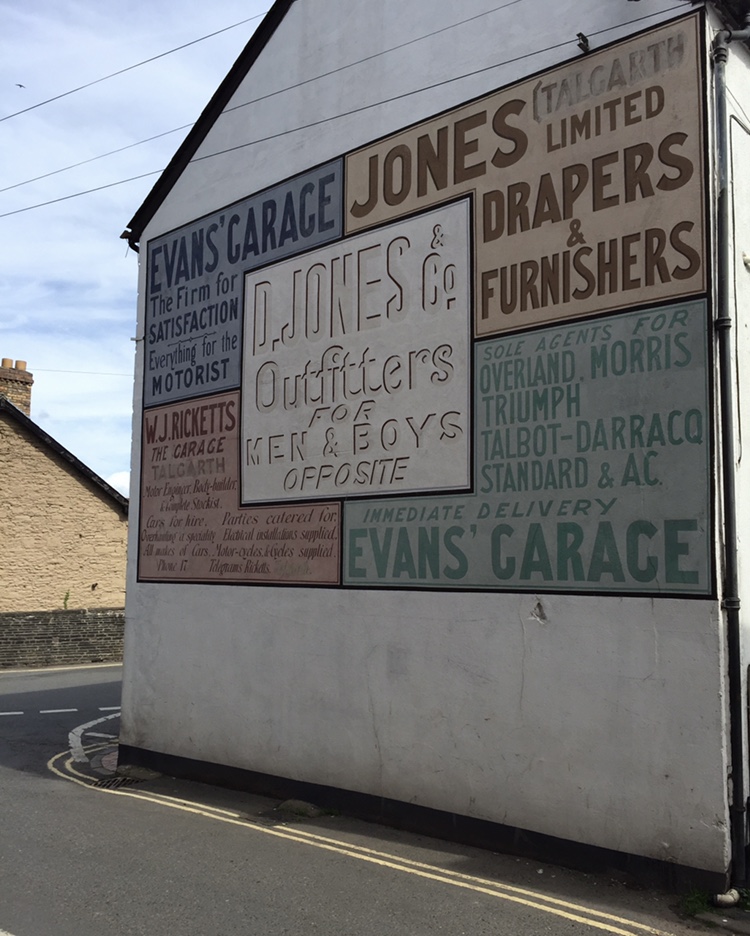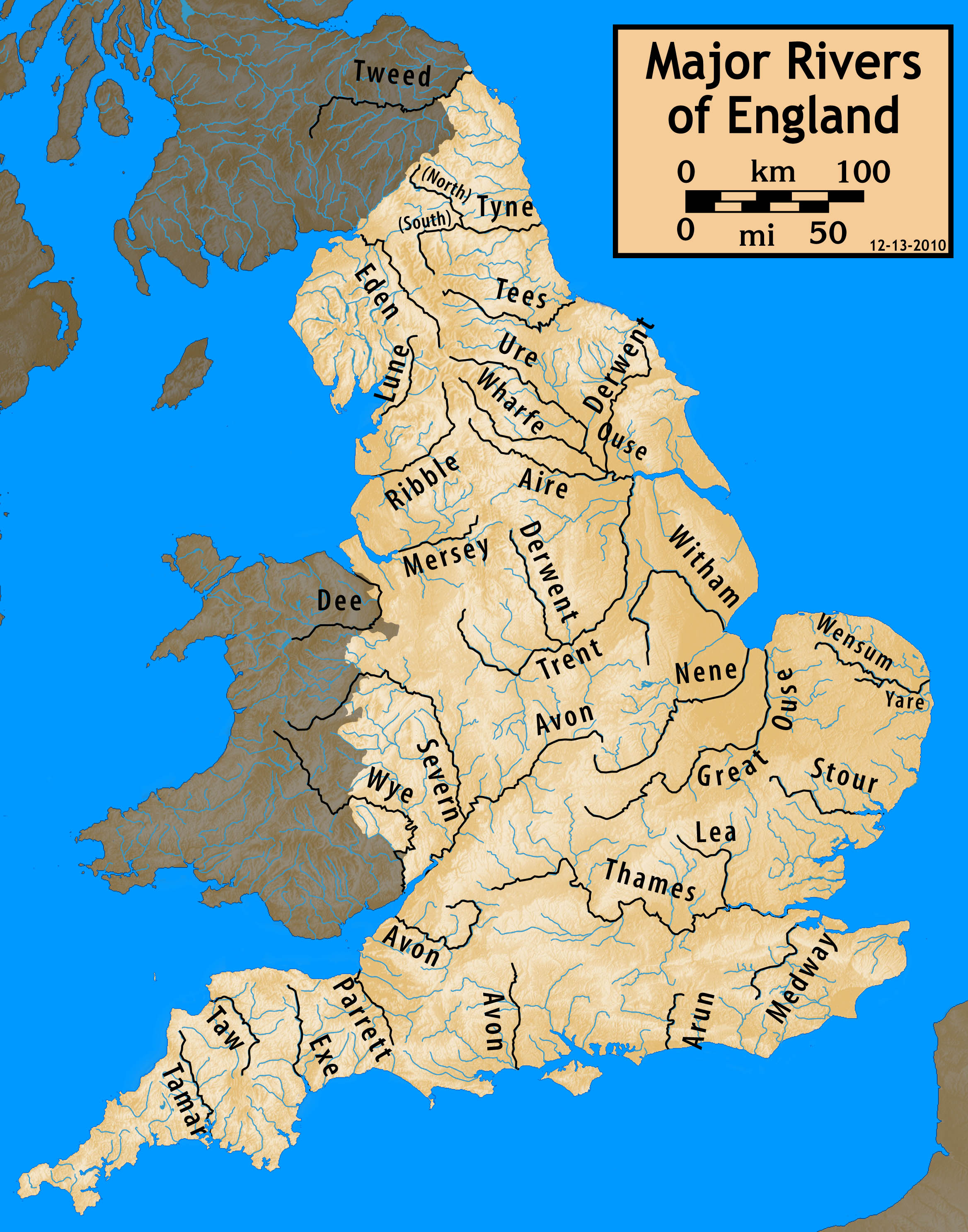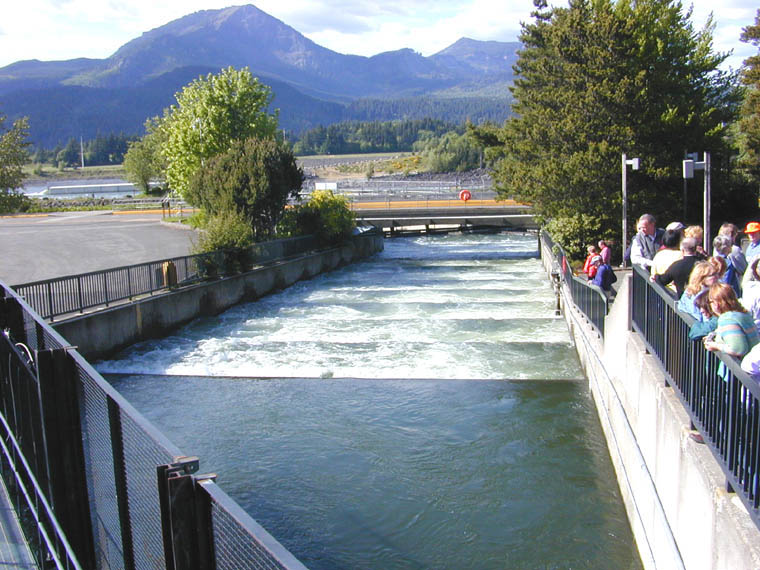|
Wye And Usk Foundation
The Wye and Usk Foundation is an environmental charity based in Talgarth, Powys in Wales which seeks to secure and improve the natural environment of the River Wye and River Usk for the benefit of local communities, anglers and others. Founded in 1995 in response to a decline in Atlantic salmon, it is a member of The Rivers Trust and operates both in the Welsh and English parts of the catchments. The foundation maintains webcams on the two rivers and on the Wye's major tributaries, the River Lugg and the River Monnow. The Trust carries out habitat conservation work such as managing riparian vegetation and fencing out grazing animals to decrease trampling, not just on the main rivers but also on numerous tributaries. Other work includes construction of fish passes around weirs, litter clearance, re-gravelling of sections of river depleted of their natural supply and dealing with invasive non-native species such as giant hogweed and American signal crayfish The signal crayfish (''P ... [...More Info...] [...Related Items...] OR: [Wikipedia] [Google] [Baidu] |
Talgarth
Talgarth is a market town, community and electoral ward in southern Powys, Mid Wales, about north of Crickhowell, north-east of Brecon and south-east of Builth Wells. Notable buildings in the town include the 14th-century parish church and a defensive tower house. According to traditional accounts, Talgarth was the capital of the early medieval Welsh Kingdom of Brycheiniog. It is in the historic county of Brecknockshire. In 2011, it had a population of 1,724. Name The meaning of the town's name is in the Welsh words ''tâl'' (forehead or brow of a hill) and ''garth'' (mountain ridge or promontory), thus "end of the ridge". It appears as Talgart in 1121, as Talgard after 1130, and in its present form in the years between 1203 and 1208. The church of Talgarth is recorded in 1488 as dedicated to ''Sce Wenne Virginis'', explained as Gwen (granddaughter of Brychan). Culture and community In August, the Talgarth Festival of the Black Mountains is held, a popular countryside ev ... [...More Info...] [...Related Items...] OR: [Wikipedia] [Google] [Baidu] |
River Lugg
The River Lugg ( cy, Afon Llugwy) rises near Llangynllo in Radnorshire, Wales. It flows through the border town of Presteigne and then through Herefordshire, England, where it meets its main tributary, the River Arrow, to the south of Leominster. It flows into the River Wye downstream of Hereford at Mordiford, around from its source. Its name comes from a Welsh root, and means "bright stream". As it passes through the countryside, it is crossed by a number of bridges, many of which are sufficiently old to have become listed structures. Lugg Bridge at Lugwardine and the bridge at Mordiford with its associated causeway both date from the 14th century. The river at Leominster was altered significantly in the 1960s, when it was diverted to the south and then along the course of the Leominster and Kington Railway around the northern edge of the town, as part of a flood defence scheme. In the past, it was important for milling, supplying power to nearly one third of the mills in ... [...More Info...] [...Related Items...] OR: [Wikipedia] [Google] [Baidu] |
Rivers Of England
This is a list of rivers of England, organised geographically and taken anti-clockwise around the English coast where the various rivers discharge into the surrounding seas, from the Solway Firth on the Scottish border to the Welsh Dee on the Welsh border, and again from the Wye on the Welsh border anti-clockwise to the Tweed on the Scottish border. Tributaries are listed down the page in an upstream direction, i.e. the first tributary listed is closest to the sea, and tributaries of tributaries are treated similarly. Thus, in the first catchment below, the River Sark is the lowermost tributary of the Border Esk and the Hether Burn is the lowermost tributary of the River Lyne. The main stem (or principal) river of a catchment is labelled as (MS), left-bank tributaries are indicated by (L), right-bank tributaries by (R). Note that in general usage, the 'left (or right) bank of a river' refers to the left (or right) hand bank, as seen when looking downstream. Where a named river de ... [...More Info...] [...Related Items...] OR: [Wikipedia] [Google] [Baidu] |
American Signal Crayfish
The signal crayfish (''Pacifastacus leniusculus'') is a North American species of crayfish. It was introduced to Europe in the 1960s to supplement the North European '' Astacus astacus'' fisheries, which were being damaged by crayfish plague, but the imports turned out to be a carrier of that disease. The signal crayfish is now considered an invasive species across Europe, Japan, and California, ousting native species there. Description and ecology Members of this species are typically long, although sizes up to are possible. They are bluish-brown to reddish-brown in colour, with robust, large, smooth claws. They have a white to pale blue-green patch near the claw hinge, like the white flags that signalmen used for directing trains—hence the name. The lifecycle of the signal crayfish is typical for the family Astacidae. Around 200–400 eggs are laid after mating in the autumn, and are carried under the female's tail until they are ready to hatch the following spring. ... [...More Info...] [...Related Items...] OR: [Wikipedia] [Google] [Baidu] |
Giant Hogweed
''Heracleum mantegazzianum'', commonly known as giant hogweed, is a monocarpic perennial herbaceous plant in the carrot family Apiaceae. ''H. mantegazzianum'' is also known as cartwheel-flower, giant cow parsley, giant cow parsnip, or hogsbane. In New Zealand, it is also sometimes called wild parsnip (not to be confused with ''Pastinaca sativa'') or wild rhubarb. Giant hogweed is native to the western Caucasus region of Eurasia. It was introduced to Britain as an ornamental plant in the 19th century, and has also spread to other areas in Western Europe, the United States, and Canada. Its close relatives, Sosnowsky's hogweed and Persian hogweed, have similarly spread to other parts of Europe. The sap of giant hogweed is phototoxic and causes phytophotodermatitis in humans, resulting in blisters and scars. These serious reactions are due to the furanocoumarin derivatives in the leaves, roots, stems, flowers, and seeds of the plant. Consequently, it is considered to be a no ... [...More Info...] [...Related Items...] OR: [Wikipedia] [Google] [Baidu] |
Fish Pass
A fish ladder, also known as a fishway, fish pass, fish steps, or fish cannon is a structure on or around artificial and natural barriers (such as dams, locks and waterfalls) to facilitate diadromous fishes' natural migration as well as movements of potamodromous species. Most fishways enable fish to pass around the barriers by swimming and leaping up a series of relatively low steps (hence the term '' ladder'') into the waters on the other side. The velocity of water falling over the steps has to be great enough to attract the fish to the ladder, but it cannot be so great that it washes fish back downstream or exhausts them to the point of inability to continue their journey upriver. History Written reports of rough fishways date to 17th-century France, where bundles of branches were used to make steps in steep channels to bypass obstructions. A pool and weir salmon ladder was built around 1830 by James Smith, a Scottish engineer on the River Teith, near Deanston, Per ... [...More Info...] [...Related Items...] OR: [Wikipedia] [Google] [Baidu] |
Habitat Conservation
Habitat conservation is a management practice that seeks to conserve, protect and restore habitats and prevent species extinction, fragmentation or reduction in range. It is a priority of many groups that cannot be easily characterized in terms of any one ideology. History of the conservation movement For much of human history, ''nature'' was seen as a resource that could be controlled by the government and used for personal and economic gain. The idea was that plants only existed to feed animals and animals only existed to feed humans. The value of land was limited only to the resources it provided such as fertile soil, timber, and minerals. Throughout the 18th and 19th centuries, social views started to change and conservation principles were first practically applied to the forests of British India. The conservation ethic that began to evolve included three core principles: 1) human activities damage the environment, 2) there was a civic duty to maintain the environment ... [...More Info...] [...Related Items...] OR: [Wikipedia] [Google] [Baidu] |
River Monnow
The River Monnow ( cy, Afon Mynwy) marks the England–Wales border for much of its length. After flowing through southwest Herefordshire, England, and eastern Monmouthshire, Wales, its confluence with the River Wye is approximately south of Monmouth. The Monnow rises near Craswall on Cefn Hill just below the high Black Mountains, Wales. It flows southwards, gaining the waters of its tributaries the Escley Brook and Olchon Brook near Clodock and the waters of the River Honddu, from the Welsh side of the Black Mountains, near Pandy. The river then flows briefly eastwards, to Pontrilas, where it is joined by its largest tributary, the River Dore before again turning southwards. At Monmouth, the Monnow joins into the River Wye with the River Trothy. The unique medieval Monnow Bridge in Monmouth is the only remaining fortified river bridge in Great Britain with its gate tower standing on the bridge. The long-distance Monnow Valley Walk follows the river. Toponymy The Ri ... [...More Info...] [...Related Items...] OR: [Wikipedia] [Google] [Baidu] |
Drainage Basin
A drainage basin is an area of land where all flowing surface water converges to a single point, such as a river mouth, or flows into another body of water, such as a lake or ocean. A basin is separated from adjacent basins by a perimeter, the '' drainage divide'', made up of a succession of elevated features, such as ridges and hills. A basin may consist of smaller basins that merge at river confluences, forming a hierarchical pattern. Other terms for a drainage basin are catchment area, catchment basin, drainage area, river basin, water basin, and impluvium. In North America, they are commonly called a watershed, though in other English-speaking places, "watershed" is used only in its original sense, that of a drainage divide. In a closed drainage basin, or endorheic basin, the water converges to a single point inside the basin, known as a sink, which may be a permanent lake, a dry lake, or a point where surface water is lost underground. Drainage basins are similar ... [...More Info...] [...Related Items...] OR: [Wikipedia] [Google] [Baidu] |
Powys
Powys (; ) is a Local government in Wales#Principal areas, county and Preserved counties of Wales, preserved county in Wales. It is named after the Kingdom of Powys which was a Welsh succession of states, successor state, petty kingdom and principality that emerged during the Middle Ages following the end of Roman rule in Britain. Geography Powys covers the historic counties of Montgomeryshire and Radnorshire, most of Brecknockshire, and part of Denbighshire (historic), historic Denbighshire. With an area of about , it is now the largest administrative area in Wales by land and area (Dyfed was until 1996 before several Preserved counties of Wales, former counties created by the Local Government Act 1972 were abolished). It is bounded to the north by Gwynedd, Denbighshire and Wrexham County Borough; to the west by Ceredigion and Carmarthenshire; to the east by Shropshire and Herefordshire; and to the south by Rhondda Cynon Taf, Merthyr Tydfil County Borough, Caerphilly County Bor ... [...More Info...] [...Related Items...] OR: [Wikipedia] [Google] [Baidu] |
England
England is a country that is part of the United Kingdom. It shares land borders with Wales to its west and Scotland to its north. The Irish Sea lies northwest and the Celtic Sea to the southwest. It is separated from continental Europe by the North Sea to the east and the English Channel to the south. The country covers five-eighths of the island of Great Britain, which lies in the North Atlantic, and includes over 100 smaller islands, such as the Isles of Scilly and the Isle of Wight. The area now called England was first inhabited by modern humans during the Upper Paleolithic period, but takes its name from the Angles, a Germanic tribe deriving its name from the Anglia peninsula, who settled during the 5th and 6th centuries. England became a unified state in the 10th century and has had a significant cultural and legal impact on the wider world since the Age of Discovery, which began during the 15th century. The English language, the Anglican Church, and Engli ... [...More Info...] [...Related Items...] OR: [Wikipedia] [Google] [Baidu] |
The Rivers Trust
The Rivers Trust (RT) is an environmental charity No. 1107144, and an umbrella organisation for 60 member trusts concerned with rivers in England, Wales, Northern Ireland and Ireland. The Trust's headquarters are in Callington, Cornwall. The Rivers Trust along with its members work to protect, promote and enhance freshwater ecosystems for both people and wildlife. The Rivers Trust was founded in 2001 as the Association of Rivers Trusts.About The Rivers Trust (accessed 27 October 2016). Its founding associations were four River Trusts: the Eden Rivers Trust, Tweed Foundation, , and the |










